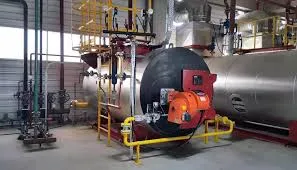دسمبر . 25, 2024 07:07 Back to list
Innovative Sand Casting Manufacturing Facilities for High-Quality Metal Parts Production
The Evolution and Importance of Sand Casting Factories
Sand casting, one of the oldest and most versatile manufacturing processes, has evolved significantly over the years, becoming a cornerstone of the foundry industry. This method utilizes sand as the primary mold material and is esteemed for its ability to produce intricate shapes and details at a relatively low cost. Sand casting factories are pivotal in various sectors, including automotive, aerospace, and construction, where metal components are essential.
What is Sand Casting?
Sand casting is a process that involves creating a mold from sand, which is then used to pour molten metal into a cavity to form a desired shape after solidification. The key components in this process include the pattern, the mold, the core, the metal to be cast, and the pouring system. Patterns, typically made of metal or plastic, are replicas of the final product and can be single-use or reusable. The sand used in the mixture is usually combined with bonding agents, often clay, to allow it to hold its shape when formed into molds.
The Process of Sand Casting
The process begins with the creation of a mold. The sand mixture is packed around a pattern to form the cavity that represents the part to be cast. Once the pattern is removed, a mold cavity remains. This mold will be used to hold the molten metal. Depending on the complexity of the casting, cores may be added to create internal features. After the mold is prepared, molten metal is poured into the cavity. Once the metal has cooled and solidified, the mold is broken away, revealing the final cast part. This method allows for a vast range of metal alloys to be used, accommodating various requirements for strength, durability, and corrosion resistance.
Advantages of Sand Casting Factories
sand castings factories

Sand casting factories boast several advantages that make them an attractive option for manufacturers. First and foremost is cost-effectiveness. The materials used for sand casting, primarily sand and clay, are relatively inexpensive and widely available. The process also allows for large components to be produced with efficient use of materials, minimizing waste.
Moreover, sand casting is exceptionally adaptable. It can produce a wide range of sizes and shapes, from small intricate parts to large structural components. This versatility is crucial in industries like automotive manufacturing, where parts ranging from engine blocks to aluminum wheels can be made. The ability to easily modify patterns also allows manufacturers to respond swiftly to changes in design without significant rework.
The Role of Technology in Sand Casting
The integration of technology has further enhanced the operations of sand casting factories. Modern sand casting facilities employ computer-aided design (CAD) systems for creating precise patterns. This not only increases accuracy but also reduces the time required for pattern creation. Additionally, advancements in 3D printing technology have begun to influence mold making, allowing for more complex designs and quicker turnaround times.
Automation is also making its mark in sand casting factories. Automated systems for sand preparation, mold handling, and pouring processes are improving efficiency and product quality while reducing labor costs. High-quality control measures ensure that the final products meet stringent industry standards, thus enhancing the reliability of sand-cast components in critical applications.
Conclusion
As sand casting continues to evolve with advancements in technology and automation, the role of sand casting factories remains crucial in various industries. They are not only vital in producing high-quality metal parts but also serve as a testament to the traditional craftsmanship that underpins modern manufacturing. With their ability to adapt to changing demands and incorporate innovative practices, sand casting factories will undoubtedly remain integral to the manufacturing landscape for years to come. The blend of historical techniques and modern advancements ensures that sand casting will continue to play a key role in the production of complex and essential components in a variety of applications.
-
Centrifugally Cast Iron Water Main Pipe for Reliable Mains
NewsAug.22,2025
-
Durable Centrifugally Cast Iron Water Main Pipe
NewsAug.11,2025
-
Centrifugally Cast Iron Water Main Pipes for Reliability
NewsAug.10,2025
-
High-Quality Centrifugally Cast Iron Water Main Pipes
NewsAug.09,2025
-
Durable Cast Iron Water Main Pipe & Drainage Solutions
NewsAug.08,2025
-
Buy Cast Iron Pipe: Premium Ductile Iron & Drain Solutions
NewsAug.07,2025


